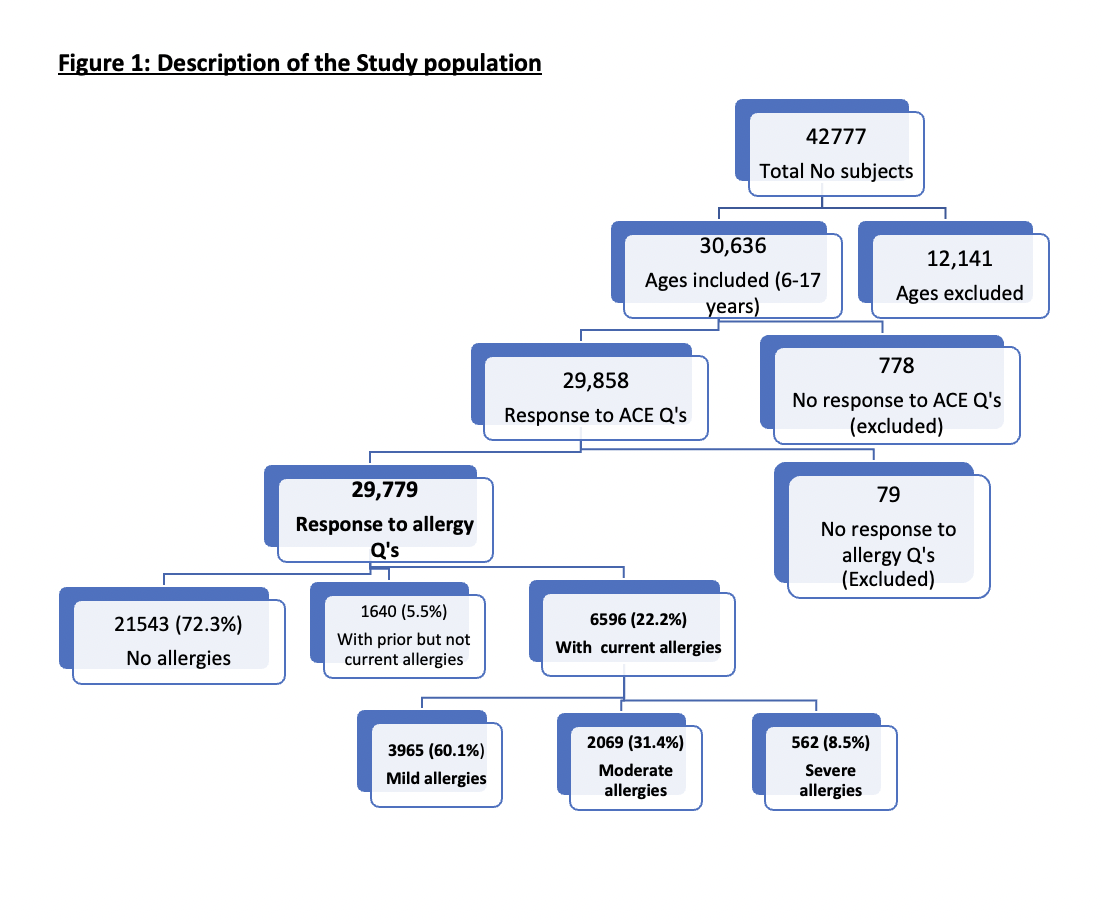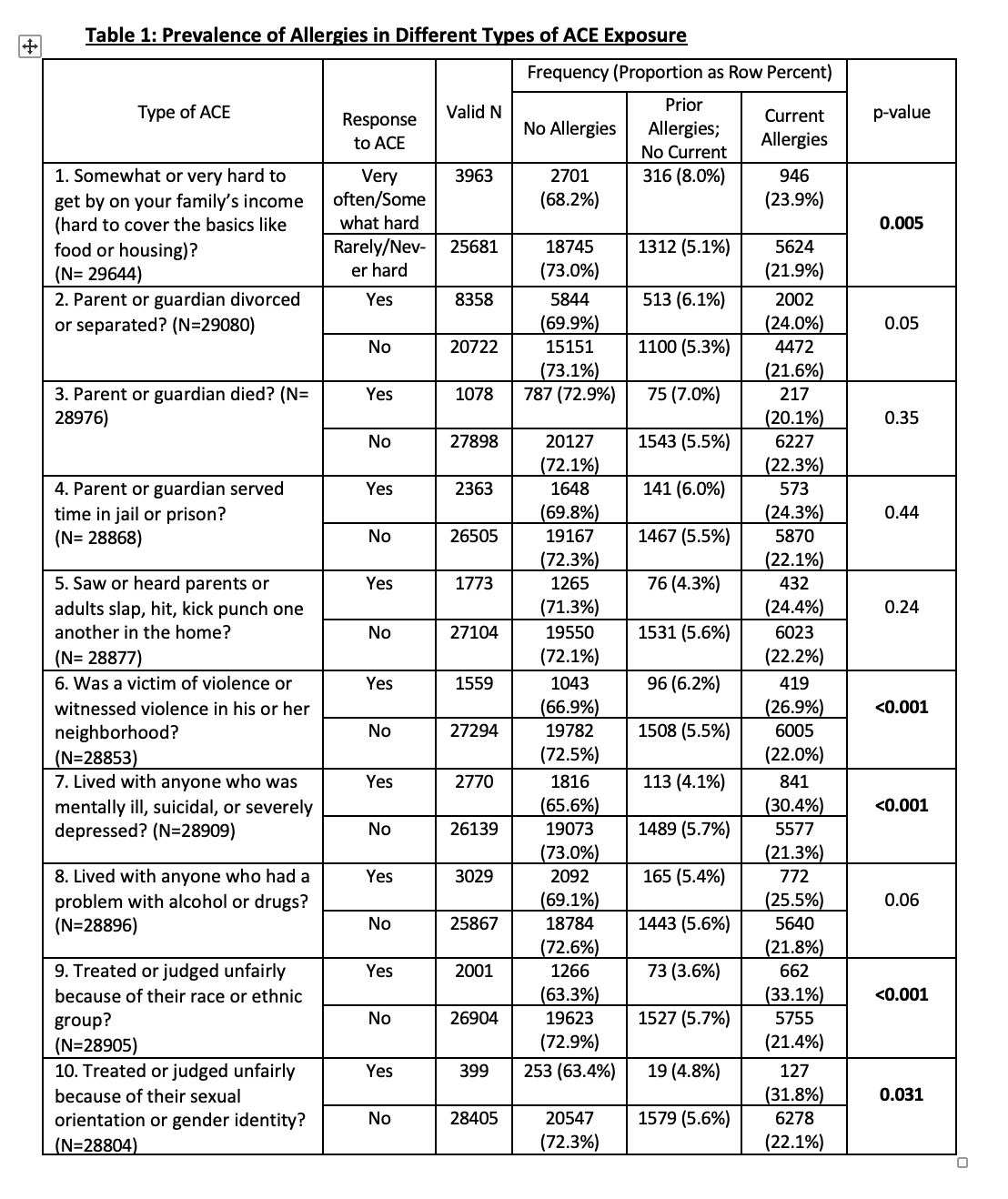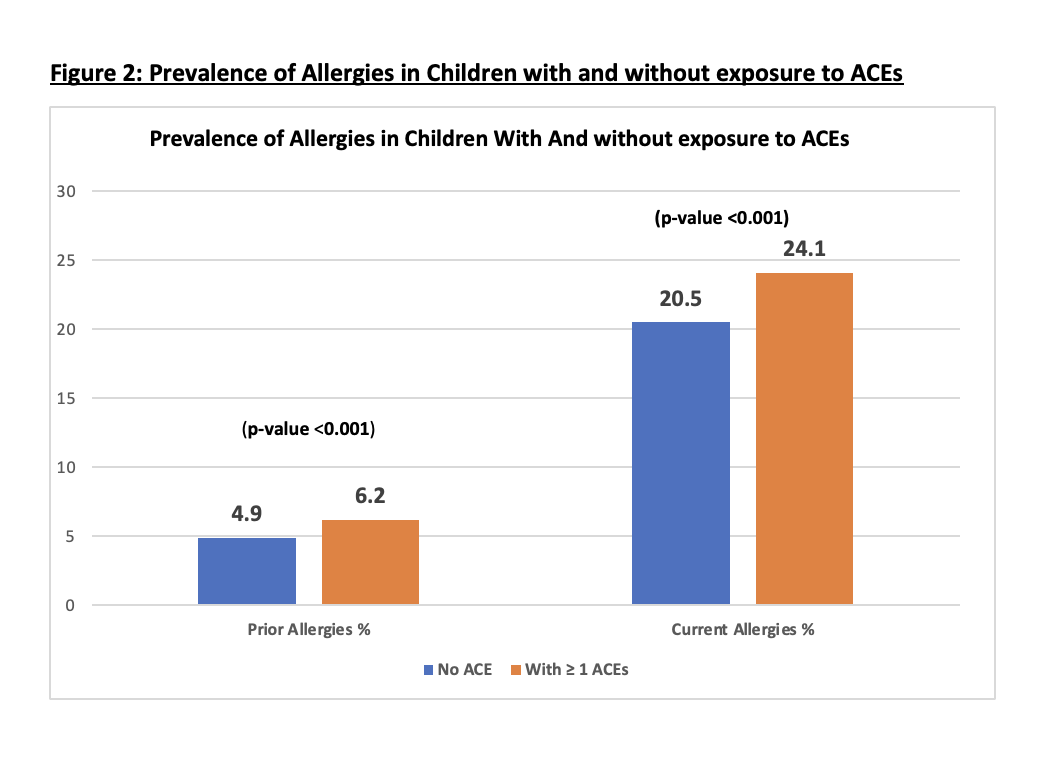Health Equity/Social Determinants of Health
Health Equity/Social Determinants of Health 4
426 - Association between Adverse Childhood Experiences and Current Allergies in Children
Publication Number: 426.219
- FK
Fernanda E. Kupferman, MD (she/her/hers)
Vice chair and Residency Program Director
One Brooklyn Health @ Brookdale Hospital Medical Center
Brooklyn, New York, United States - SP
Sai Sarada Policherla (she/her/hers)
Resident
Brookdale university hospital medical center
Brooklyn, New York, United States
Presenting Author(s)
First Author(s)
Background:
Adverse Childhood Experiences (ACEs) might affect both the prevalence and severity of allergies due to a stress response that can induce inflammation, resulting in immune system dysregulation. Studies on the association between ACEs and allergies are lacking.
Objective:
To assess the association between exposure to ACEs and current allergies and its severity levels in children 6–17-year-old.
Design/Methods:
This is a retrospective observational study, with secondary data analysis from the 2020 National Survey of Children’s Health comparing the association between allergies in children 6 – 17 years with and without ACEs exposure. Participants answered survey questions using a Screener Questionnaire and Topical Questionnaire. Children with no parental response to ACEs and allergies questionnaire were excluded. Independent variables were age, gender, race and the types of ACE exposure (Table 1). Outcome variables were the prevalence of allergies and its severity levels. Data were analyzed using the SPSS Complex Samples version 26. Logistic regression analysis was conducted to investigate the best predictor of each outcome variable.
Results:
A total of 29,779 of eligible subjects participated in the study (Fig. 1). Of these, 1640 (5.5%) had prior allergies and 6596 (22.2%) had current allergies. Among the ones with current allergies, 3965 (60.1%) had mild, 2069 (31.4%) had moderate and 562 (8.5%) had severe allergies. Current allergies were more prevalent in children exposed to ACEs (Fig. 2); current allergies were significantly associated with low income, neighborhood violence, mental health disorders, discrimination against race and gender (Table 1). However, the severity of allergies was not significantly associated with exposure to ACEs.
Conclusion(s):
There was an increased prevalence of current allergies among children exposed to ACEs. The severity of allergy levels was not associated with ACEs exposure.



